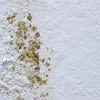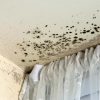Most people don’t realize their homes have been invaded by black mold. To the untrained eye, this offending substance is difficult to catch. It’s often invisible and easily mistakable for regular mold.
However, leaving black mold on your walls, ceilings, or floors is dangerous to you and your family. Understanding the dangers of black mold is essential in properly identifying its signs and knowing when to hire a black mold removal service.
Health Hazards of Black Mold
Mold is found everywhere, even in the natural environment. However, certain types of this fungus pose minor to major health risks to people. Black toxic mold, otherwise called Stachybotrys chartarum, is known to present several health hazards.
Allergies and Irritation
Exposure to black mold often results in the inhalation of mold spores. If you or anyone in your household has allergies, these spores can trigger an allergic attack. Prolonged exposure to black mold can result in the following symptoms:
- watery or irritated eyes;
- a dry cough;
- a sore throat;
- a runny or blocked nose;
- wheezing; and
- sinusitis
The symptoms may worsen depending on how severe someone’s allergy is. For people with pre-existing lung problems, prolonged exposure to black mold can result in an asthma attack or shortness of breath.
Infections
It’s rare for black mold to become the source of infections for people with healthy immune systems. However, if you or anyone in your household has a compromised immune system—such as transplant patients, cancer patients, or HIV patients—there is a high risk of fungal infections brought on by black mold.
How to Identify Black Mold
Different signs help identify black mold. Be familiar with it to eliminate or prevent the problem.
What does black mold smell like?
Black mold only assumes its distinct dark color once it has fully grown. This is why it’s difficult to identify without the proper training. Experts have advised people to be cautious of musty odors in their homes. This smell is indicative of black mold growth.
What does black mold look like?
Black mold starts with a dark greenish hue. As it grows and worsens, it takes on the common black color. Also, black mold is not fuzzy like other types of fungi. It often looks like dirt or mud. When inspecting your home, look out for dirty-looking walls or ceilings.
Where is black mold found?
Black mold feeds on cellulose, making it a common sight on poorly maintained wood walls and ceilings. However, it is also known to grow on the drywall as it feeds on the paper coating. If there’s black mold growing on your drywall, you can expect to find it on the other side as well.
Black mold thrives in damp places such as the bathroom, attic, basement, and garage. In addition to these places, be on the lookout in rooms with poor ventilation. Look at the tight corners of rooms and the edges of the ceilings.
Black mold is difficult to identify when it’s still in its starting stages. But if you know how to recognize the signs, you can get a headstart in preventing its growth. Don’t live with the dangers of black mold; contact the professionals today.







